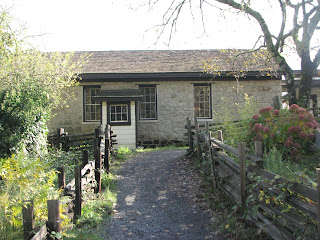

 I will always remember my trip to the Colusa-Sacramento River State Recreation Area as the day my long time travel companion - my Cannon Power Shot 12x zoom camera - bit the dust in the middle of a hike.
I will always remember my trip to the Colusa-Sacramento River State Recreation Area as the day my long time travel companion - my Cannon Power Shot 12x zoom camera - bit the dust in the middle of a hike.
As serendipity would have it, I had brought my cheap water-proof camera with me since rain was predicted. As it turns out, this little camera doesn't take bad pictures. Its downfall is a crappy LED display and no view finder. The fact that it was only a 3x zoom didn't really come into play since I couldn't see what I was shooting anyway.
The levee marsh was kind enough to offer up a comfty, over-stuffed chair for me to plop into while I rummaged through my backpack, swapping out cameras and batteries after Patty and my efforts at reviving my old camera, failed.
This campground on the west side of the Sacramento River was originally, literally, a garbage dump. About forty years ago the dump was filled, graded, and improved and in 1964 the area was opened as a park. Fishing, boating and

 summer swimming (if you can endure the icy cold water) are the primary activities here.
summer swimming (if you can endure the icy cold water) are the primary activities here. While there are pleasant walks to take, it's not really a "hiker's park" although some good hiking can be found at the nearby Sutter Buttes.
A one mile nature trail takes you along the riverbank lined by cottonwood and willow trees. The same wild grape-vines that seemed to be choking out all competing vegetation when we visited the area last summer, was still clinging to its hosts in its withered winter form. The trail is the old campground road. In 1980, the campground was moved to its present location to avoid the Sacramento River’s annual flooding. Large amounts of silt is left behind after the wet season, creating some of the richest farmland in the nation, and sometimes covering the boatramp and picnic area with mud.

 Almond and Olive orchards can be seen on an eastbound walk on the levee wall, but it is Rice that is currently the primary crop in the Colusa area.
Almond and Olive orchards can be seen on an eastbound walk on the levee wall, but it is Rice that is currently the primary crop in the Colusa area.
Patty I and returned to the car at the campground and banged my camera around for a few minutes, hoping some harsh treatment might knock it into working order, but alas... so we headed to the nearby Colusa Casino for a quick lunch and consolation before exploring the southern end of the park. Only one of the casino's three restaurants was open, but it was satisfactory. This particular casino is still under construction. That, combined with an impoverished looking clientele gave it an aura of seediness and sadness.


 The campground is lovely and well maintained, A variety of trees mingle, and at least one tree was conducting an experiment with gravity. As with many parks, the day-use fee was collected on the honor system. Happily, the adjacent Colusa Levee Scenic City Park will be taking over the concession of this State Park, allowing it to remain open! Yes!
The campground is lovely and well maintained, A variety of trees mingle, and at least one tree was conducting an experiment with gravity. As with many parks, the day-use fee was collected on the honor system. Happily, the adjacent Colusa Levee Scenic City Park will be taking over the concession of this State Park, allowing it to remain open! Yes!
We strolled south on the old levee, through the city park and under the twin water towers. If you look out you can see some of the cities old Victorian homes. But if you look straight down off the levee, you can see the less affluent old downtown, with views of the backside of small trailer parks and old historic Chinese establishments.

 An dilapited old but still opera-ting movie theatre offered a single title, "Hunger Games."
An dilapited old but still opera-ting movie theatre offered a single title, "Hunger Games." Water level markers along the levee bank indicate when evacuations are in order.
We turned around at the bridge on...Bridge Street! But, if you like you can continue walking south on the levee for a few miles, viewing the expansive agricultural lands. The current bridge was built in 1980. The original Colusa Bridge is a designated his-toric site. The turning mech-anism from the old truss bridge is on view at the park.


We walked through the old downtown on our way back to the state park. On this late Saturday afternoon businesses were closed, and except for a couple of saloons, it had a bit of ghost town feel to it. The locals informed us that the Rite-Aid in the "newer part of town" was our only shot at getting a new camera within 50 miles. They had exactly one digital camera for sale, no better than the little one I was already using. Patty graciously offered to let me borrow her camera for our next day's trip to Anderson Marsh, but I declined. Photographing is a major enjoyment for us both, and I decided I should make due with what I had. It turned out alright.
I hope to see you at the state parks.
Lucy




































